The ESARDA Bulletin is the academic peer-reviewed journal featuring scientific and technical articles related to safeguards and verification. The Bulletin is published twice a year and is indexed in the Scopus citation database.
The ESARDA Bulletin is the longest standing publication of the Association. First published in 1982, the Bulletin was created to inform the ESARDA community on the latest news and activities of the group. Throughout the decades, the Bulletin gradually evolved to accommodate technical/academic papers, and in the early 2000s started including a peer-reviewed section of academic manuscripts. Since the last ten years, the bulletin has become solely a purely academic publication, shifting its scope to a purely academic journal. In 2020, the ESARDA Bulletin has been included in the Scopus citation database and is the only journal fully dedicated to the multidisciplinary area of nuclear safeguards. The European Commission’s Publication Office publishes the ESARDA Bulletin.
The Editors, together with the Editorial Board, manage the Bulletin. They are responsible for the selection and reviewing process of the manuscripts. Furthermore, the Editors handle the bureaucratic processes for publishing and distribution of the publication, as well as setting up the rules and policies of this publication.
ESARDA publishes the open access ESARDA Bulletin academic journal, which means that all articles are available on the internet to all users immediately upon publication. Non-commercial and commercial use and distribution in any medium is permitted, provided the author and the journal are properly credited.
Benefits of open access for authors, include:
- Free access for all users worldwide
- Increased visibility and readership
- Rapid publication
- No spatial constraints
The ESARDA Bulletin is published jointly by ESARDA and the Joint Research Centre of the European Commission and distributed free of charge to over 700 registered members, libraries and institutions Worldwide. No article processing charges are foreseen for the authors submitting manuscripts.
- K. Aymanns (FZJ, Germany)
- E. Branger (Uppsala University, Sweden)
- S. Cagno (EC, JRC, J.1, Italy)
- A. De Luca (EC, JRC, G.II.7, Italy)
- S. Grape (UU, Sweden)
- T. Krieger (FZJ, Germany)
- O. Okko (STUK, Finland)
- I. Popovici (CNCAN, Romania)
- G. Renda (EC, JRC, G.II.7, Italy)
- A. Rezniczek (Uba GmbH, Germany)
- R. Rossa (SCK-CEN, Belgium)
- J. Rutkowski (SNL, USA)
- Z. Stefanka (HAEA, Hungary)
- E. Stringa (EC, JRC, G.II.7, Italy)
- A. Tomanin (DG ENER, Luxembourg)
ESARDA Bulletins
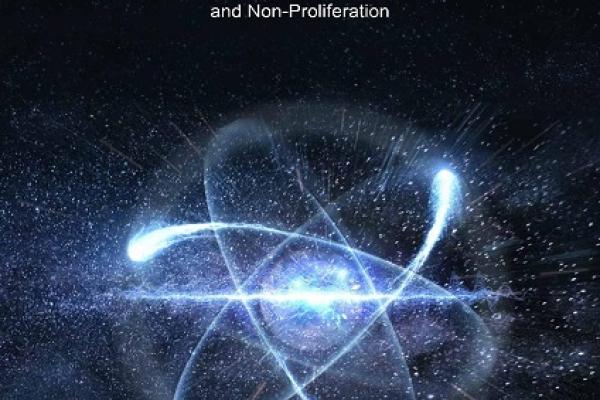
ESARDA Bulletin N.66, The International Journal of Nuclear Safeguards and Non-Proliferation.
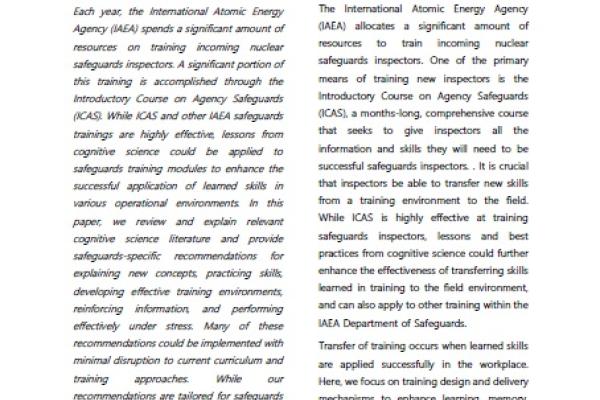
ESARDA Bulletin N.66 - This article reviews and explains relevant cognitive science literature and provide safeguards-specific recommendations for explaining new concepts, practicing skills, developing effective training environments, reinforcing information, and performing effectively under stress.
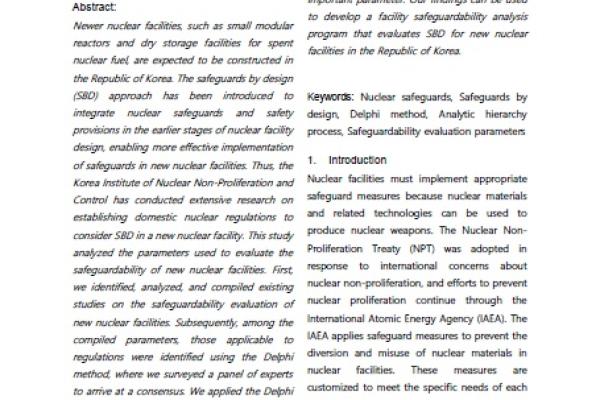
ESARDA Bulletin N.66 - This study examines existing safeguardability evaluation methodologies and the safeguard requirements and SBD guidelines of the IAEA.
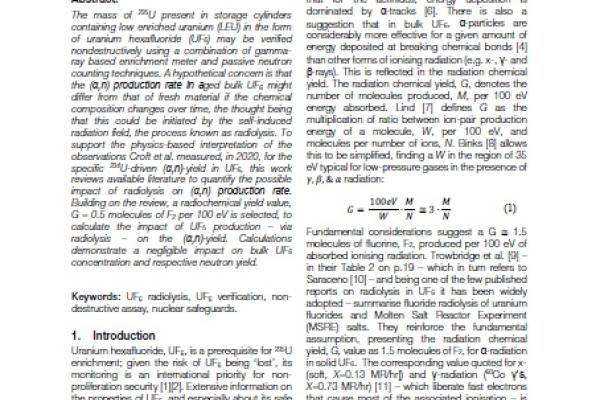
ESARDA Bulletin N.66 - To support the physics-based interpretation of the observations Croft et al. measured, in 2020, for the specific 234U-driven (α,n)-yield in UF6, this work reviews available literature to quantify the possible impact of radiolysis on (α,n) production rate.
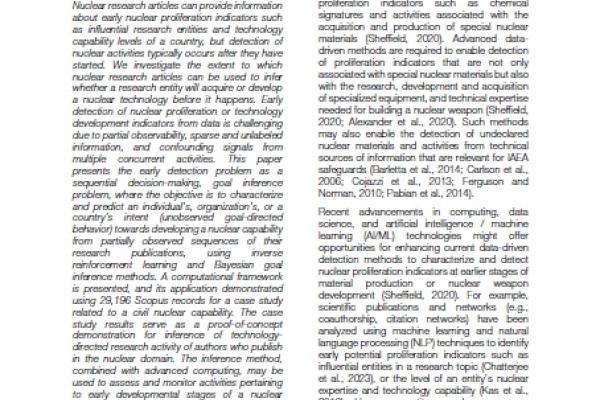
ESARDA Bulletin N.66 - This paper presents the early detection problem as a sequential decision-making, to characterize and predict an individual’s, organization’s, or a country’s intent towards developing a nuclear capability from partially observed sequences of their research publications.
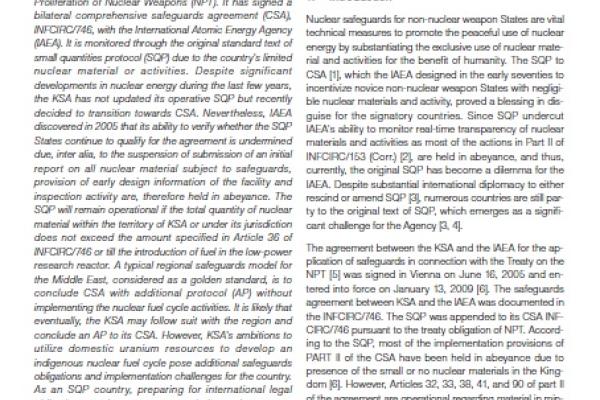
ESARDA Bulletin N.66 - This essay analyses the obligations associated with adopting the legal framework for verification and the corresponding challenges that will emerge in its implementation for KSA.

ESARDA Bulletin N.65, The International Journal of Nuclear Safeguards and Non-Proliferation.
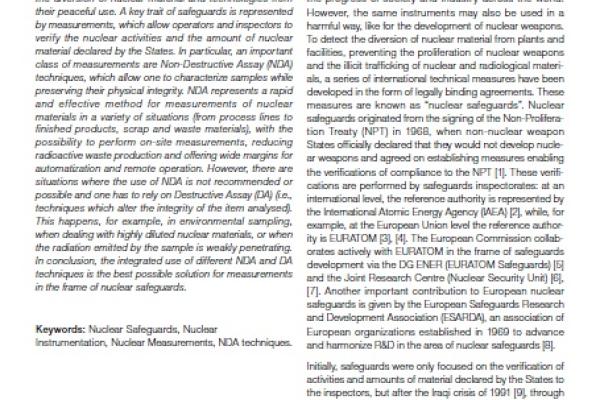
ESARDA Bulletin N.65 - This paper describes the NDA techniques used for nuclear safeguards – focusing on the main techniques and providing some examples of advanced and novel methods – with the aim of pointing out their benefits and drawbacks.
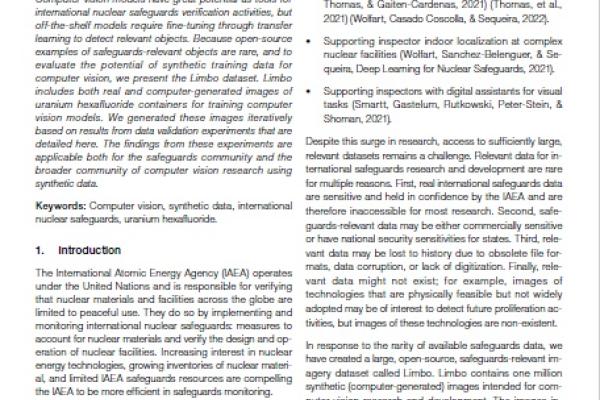
ESARDA Bulletin N.65 - Computer vision models have great potential as tools for international nuclear safeguards verification activities. The presented Limbo datasets includes both real and computer-generated images of uranium hexafluoride containers for training computer vision models.

ESARDA Bulletin N.65 - This work investigates fuel properties of submarine reactor fuel from a non-proliferation and safeguards perspective in light of the deal involving Australia, the United Kingdom and United States known as AUKUS.
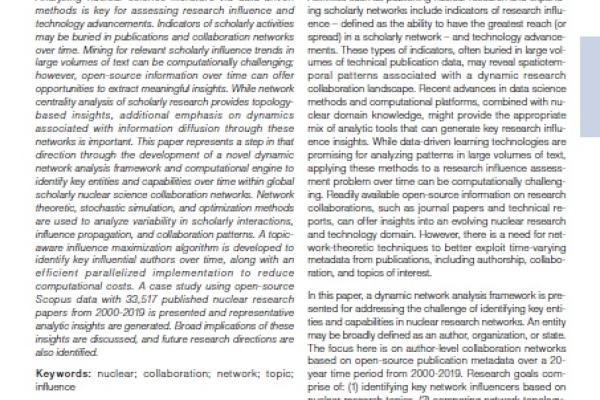
ESARDA Bulletin N.65 - This paper presents the development of a novel dynamic network analysis framework and computational engine to identify key entities and capabilities over time within global scholarly nuclear science collaboration networks.
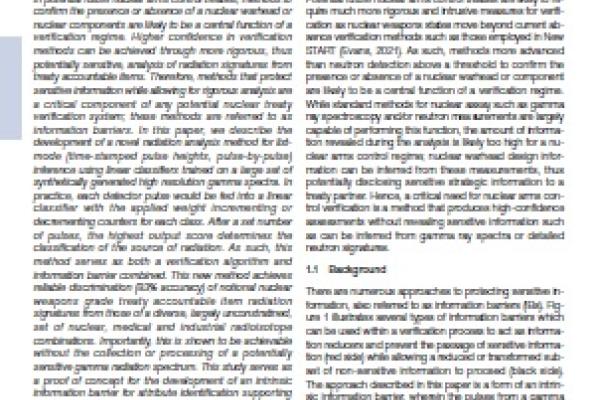
ESARDA Bulletin N.65 - This study serves as a proof of concept for the development of an intrinsic information barrier for attribute identification supporting nuclear arms control treaty verification.

ESARDA Bulletin N.65 - This article primarily concentrates on passive total neutron counting, which is used to confirm the presence of neutron-emitting special nuclear material (SNM) in the treaty accountable items (TAIs).

ESARDA Bulletin N.64 (2), The International Journal of Nuclear Safeguards and Non-Proliferation.
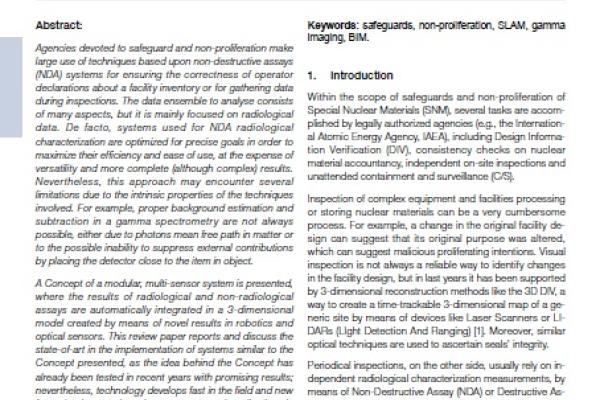
ESARDA Bulletin N.64 (2) - This review paper reports and discusses the state-of-art in the implementation of systems similar to the Concept presented, as the idea behind the Concept has already been tested in recent years with promising results.
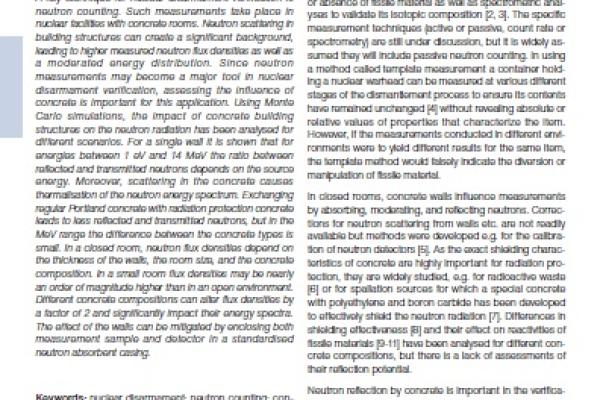
ESARDA Bulletin N.64 (2) - In this paper, a systematic analysis of the impact of concrete building structures on neutron radiation is presented based on Monte Carlo simulations of neutron transport.

ESARDA Bulletin N.64 (1), The International Journal of Nuclear Safeguards and Non-Proliferation.

ESARDA Bulletin N.64 (1) - The methodology is based on comparing the measured Cherenkov light intensity with a predicted intensity, calculated with operator information.

ESARDA Bulletin N.64 (1) - The paper discusses the methodology for performing International Atomic Energy Agency’s (IAEA’s) postinspection analysis to assess the ef fectiveness of verification inspection plans using a stochastic method.
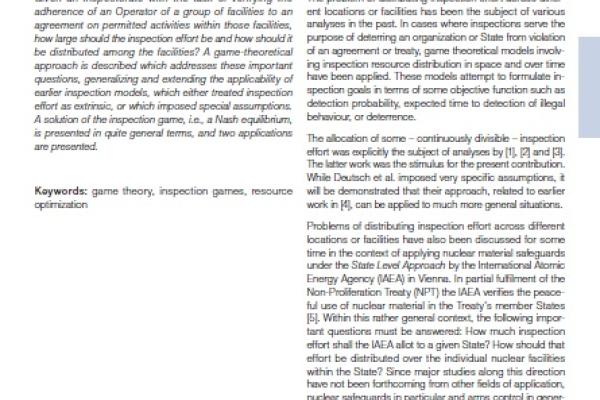
ESARDA Bulletin N.64 (1) - A solution of the inspection game, i.e., a Nash equilibrium, is presented in quite general terms, and two applications are presented.

